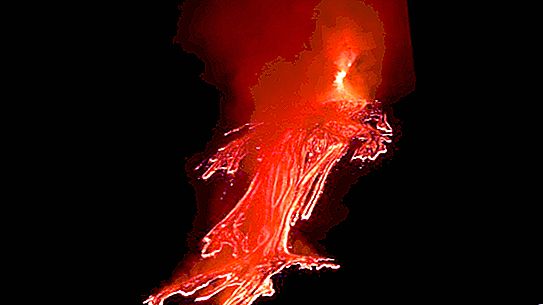In our article we want to talk about the Baikal-Lensky reserve. Arriving on Lake Baikal, few people think that it was in these parts that the primordial unique fauna and flora were miraculously preserved, as well as the conditions for a comfortable rest of tourists were organized.
The location of the reserve
The Baikal-Lensky State Nature Reserve was founded in 1986. It is located in the Olkhon and Kachug regions in the Irkutsk region. The main goal of its organization was to preserve the natural complexes that are characteristic of the northwestern Baikal region. The reserve stretches along the western part of Lake Baikal for 120 kilometers. Its total area is more than 659 thousand hectares.
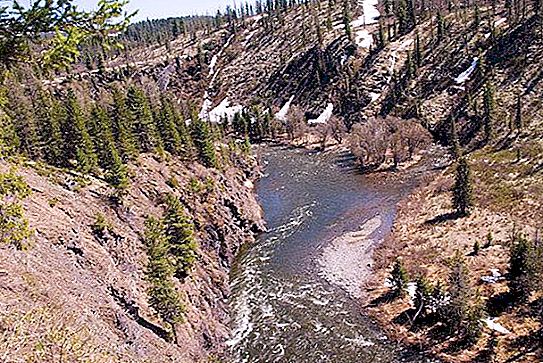
The territory of the Baikal-Lensky reserve is located in the northern part of the mountains of southern Siberia. It occupied the southern part of the Baikal ridge, which belongs to the Sayan-Baikal mountain region.
The reserve zone falls on the territory of increased seismicity. Up to two hundred earthquakes are observed here per year.
The climate of the conservation area
The climate of the Baikal-Lensky Reserve is generally continental. Up to 400 millimeters of precipitation falls here per year. In the mountains in winter, huge snow cover accumulates, which are not distributed uniformly in different areas. It must be said that these snow masses are a source of moisture for both plants and animals. In crevices, snow can accumulate for several years and not melt even on the warmest summer days.
Water resources
The territory of the Baikal-Lensky reserve is rich in waters. It is here that the sources of the Lena River are located, 250 kilometers of which flow through the protected lands. Many mountain streams and streams flow into it. The largest are: Alleli, Anai, Negnadai, Yukhta, Pankucha. The source of Lena is a small lake located on the slope of the ridge thirty kilometers from Lake Baikal.
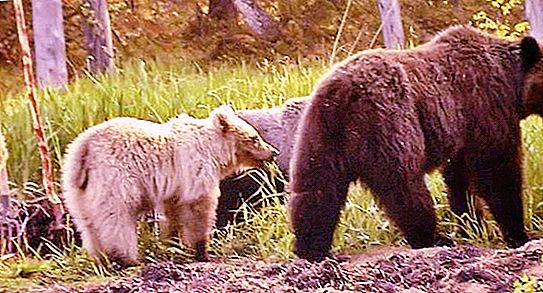
There are a lot of lakes in the reserve. All of them are small and are usually located in the floodplains of river valleys. The total area of water is about 2.5 thousand hectares.
Baikal-Lensky reserve: plants
Climatic, geological, geographical features of the reserve determined the uniqueness of the flora of this region. Flora currently numbers: three hundred varieties of lichens, one hundred and thirty species of mushrooms, one hundred and seventy-five mosses, nine hundred and twenty species of plants.
The protected area is located in the taiga (forest) zone. A border dividing the Eurasian subregion into several subregions passes through its lands: the East Siberian light coniferous-forest and the Euro-Siberian dark coniferous-forest. This is the peculiarity of the Baikal-Lensky Reserve. Fauna, as a result, is represented by completely different plants from both subregions.
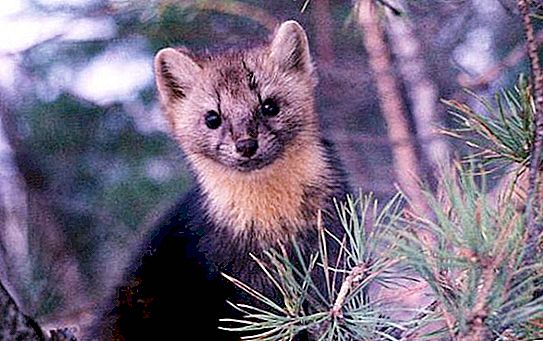
The plants of the reserve are represented by seven different types: forest, steppe, shrub, meadow and tundra. Naturally, forest dominates. The forest part is eighty-six.
In the reserve there are forty-seven species of relic plants. Alpine steppes and hollows have become an ideal place to preserve plants, since they were isolated. From relic plants grow here: Marshal sorrel, Altai onions, astragalus, bristle penny.
On the lands of the Baikal-Lensky Reserve there are thirty varieties of plants listed in the Red Book of the Russian Federation. This is Turchaninov’s meadow, a midfielder, thorny sporiferous, leafless chin, helix-bearing yamshnik and others.
The Baikal-Lensky nature reserve (photos are given in the article) is located within the taiga zone, which is why fir and Siberian spruce, cedar, larch, birch, rhododendrons, wormwood, cedar salad and others grow here. An interesting fact is that in the reserve there are plants from different subregions, all of them adapted to the growing conditions, having undergone some changes.
It is no secret that the Baikal Basin has its own special microclimate, which is formed by a combination of the proximity of the Baikal Range and Lake Baikal itself. And the composition of the soil also left its mark on the vegetation of the Baikal-Lensky reserve. On the mountain slopes of the ridge, the plants are arranged according to altitudinal zonation.
Forests here are represented by such coniferous trees: Siberian larch, Scots pine, cedar, spruce, Siberian fir. Seventy percent of the forests are conifers, and only thirty are hardwoods. Small valleys of poplars grow in the river valleys.
Deciduous forests are widespread in the reserve; they are found both in river valleys and on mountain slopes.
Baikal-Lensky Reserve: plants and animals
Currently, 54 species of mammals have been found in the reserve, of which ten species are insectivores, five are bats, twelve are carnivores, five are artiodactyls, nineteen rodents, and one pinnipeds.
Of the predators, sables, ermines, otters, and weasels are most common here. Wolverine also occurs. But badgers are quite rare. Lynx lives only in the southwest of the reserve.
There are a lot of wolves in these places, their number is directly related to the presence of ungulates. Foxes are distributed only in the mountain-forest-steppe regions of the southern part of the Baikal coast, although occasionally they can be found in other places.

The brown bear is a kind of symbol of the reserve. This is the largest predator that inhabits almost the entire territory here. The number of ungulates depends on the vegetation, topography, snow cover in winter and many other factors. The ungulates of the Baikal-Lensky reserve are represented by such species: musk deer, red deer (Manchurian deer), reindeer, elk, roe deer. Red deer and musk deer are common throughout the territory. Elk lives on the slopes of the western part of the Baikal ridge.
Hare-like species are represented in the reserve by several species: northern pika and white hare. The number of these animals is variable, it varies from year to year.
Of the rodents, the Baikal-Lensky State Nature Reserve is inhabited by squirrels, chipmunks, flying squirrels. Of the rare valuable animals, the marmot lives here. It is listed in the Red Book of the Russian Federation, Buryatia and the Irkutsk region. For many rare animals, the Baikal-Lensky Reserve became the home. Animals from the Red Book are under protection and guard.
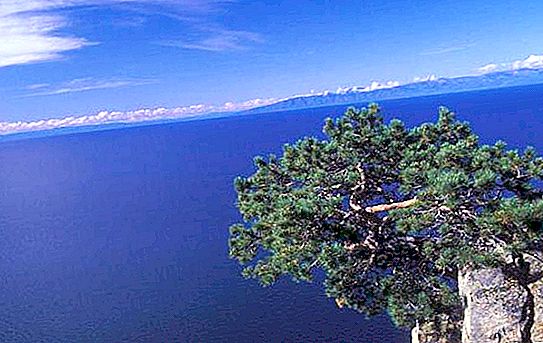
The reserve also has a long-tailed gopher, a muskrat, which settled here only in the fortieth year of the last century. And of the small rodents, the red-gray vole is the most common here. It is of great importance for the nutrition of sable and other representatives of predators. A typical taiga resident is an Asian steppe mouse. Even Daurian hamsters have been preserved here, and even lemming was discovered in taiga mosses. Seal is quite common on the Baikal coast.
Feathered Nature Reserve
The Baikal-Lensky Reserve is very interesting, the flora and fauna of which are quite diverse. The number of plants and animals that are within this territory is really impressive.
As for the birds, there are two hundred and sixty species. Who is not there. These are loons and falcons, cuckoos, cranes, swifts, and many others. Of this many species, eighteen species are listed in the Red Book of Russia: golden eagle, black stork, long-tailed eagle, gyrfalcon, white-tailed eagle, belladonna, white-headed gull, bustard and others.
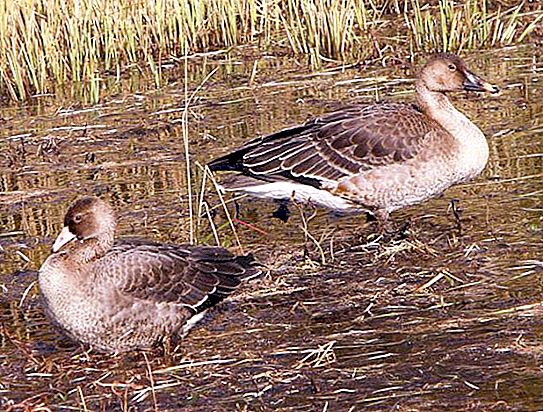
The greatest number of birds lives in taiga forests. The remaining natural complexes are already less populated by them.
Amphibians and fish conservation area
The reptiles and amphibians in the region are represented by Siberian and sharp-faced muzzle frogs and Siberian coal-toothed. Several species of lizards have also been found. One of them is viviparous, and the second is quick. There are two varieties of snakes.
As for fish, there are eleven species in the reserve: cod-shaped, carp-shaped, and salmon-like. This does not include species of underwater inhabitants of Lake Baikal itself, since it is not located in a protected area.
In reservoirs, forty-nine species of algae are recorded. The most common green algae. The species composition of zooplankton is also extensive in lakes.
Sights of the reserve
The Baikal-Lensky Nature Reserve (photographs demonstrate the beauty of these places) are not only flora and fauna, they also have their own sights. These include Cape Ryty, the source of Lena, the late Cape, Mount Onholoy, the Museum of Nature of the Baikal-Lensky Reserve.
Cape Ryty - a unique concentration of religious, historical and natural sites. This is perhaps the most mysterious place of Lake Baikal. According to legend, a ghostly palace of the son of heaven was built on the cape. The local population was afraid to pester on this shore, and even more so to go into the gorge. They really did not want to annoy the spirits. And there are many legends about the Rita River.
The source of Lena is a beautiful, attractive, but inaccessible place for visitors. It is located only ten kilometers from Lake Baikal. At the source is a wooden church.
As for Mount Onholoy, the locals consider it sacred. Prayers have long been held here. Almost at the very top of the mountain there is a relatively flat place from a pile of stones piled on top of each other in the old days. These stones were discovered in 1999. There is no doubt that this is the work of man. Perhaps prayers took place here.
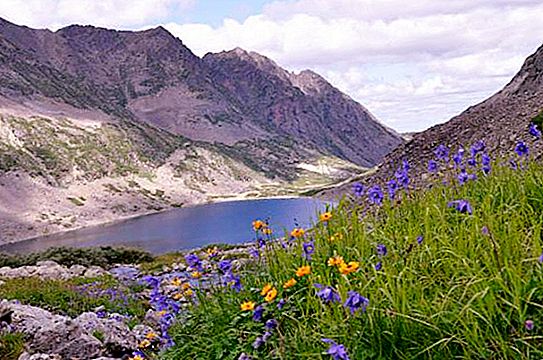
The Baikal-Lensky State Reserve has its own museum, which is located in the administrative building in the city of Irkutsk. It presents exhibits of flora and fauna of protected lands.
A beautiful and unique place is the Baikal-Lensky Reserve. Interesting facts from the life of animals can be found here, and sometimes even seen. There is a coast of brown bears in the protected area. That is the name of the coastal strip between two capes. And the cape got its name due to the fact that in May the bears wake up and wander ashore to feast on insects. During this period, it is so interesting to watch them, you can even photograph the owners of the taiga.
In the area of Cape Pokoyniki in the reserve there are two very ancient volcanoes called Solnechny and Kedrovy. However, they erupted a very, very long time ago, in those days when there were still no people.
But Cape Mortuary is believed to be sacred to the Buryats. They say that on this far shore of Lake Baikal they brought the bodies of the dead and left them, as they say, for eating by animals and birds.
Throughout the reserve there is only one single place where ships enter and where there are guest houses for vacationers. Quartzites were mined here for a very long time, for this reason Zavorotnaya Bay was excluded from the lands of the protected zone. However, this did not make the place itself less attractive. The water in the bay is clear, and the species are so attractive that it is impossible to take your eyes off. Yes, and another plus, fishing is allowed on Zavorotnaya.
Protection of the reserve
In the mode of functioning of the reserve, one of the main tasks is the protection of its territory. And this topic is currently very relevant. Active development of adjacent lands, this mainly concerns forests, has led to a high concentration of people at the borders of the protected area. And in the spring and summer, the number of tourists who come and settle here "savages" has increased. All this leads to an increase in the number of offenses. Some of them are not intentional, but others are committed with malicious intent. Local villagers sometimes engage in poaching, although everyone has long known that hunting in these places is prohibited. In order to prevent such situations, rounds of state inspectors should be constantly present.
However, the most harm is done by wealthy people who want to hunt in the Baikal region. To do this, they use paragliders, hunting ungulates from the air. On such air transport they can get to the most distant and inaccessible places.
Using the features of the relief, violators land on the headlands and hunt. Of course, the material and technical base of the reserve lags behind the modern level, which makes it more difficult to combat poaching. Nevertheless, annually protocols are drawn up and violators are detained, an active struggle is being waged.
In addition, fires are very dangerous for the reserve. Currently, cases of the transition of fires from neighboring lands have become more frequent. This situation has arisen due to the high cost of aviation services for the detection and suppression of fires. Because they refused it. But in emergency situations it is not possible to get by transport or horses quickly, and this leads to the fact that the fire becomes uncontrollable and spreads to even larger areas.
Therefore, the issue of creating a special conservation area around the reserve is raised annually. And this topic is becoming increasingly relevant. However, this issue has not yet been resolved.
Research work in the reserve
Research work is one of the priority tasks of the reserve. It conducts research and monitoring in various scientific fields. Everything is aimed at the study of natural objects and complexes. Basic measures are being developed to protect nature and restore the number of endangered species.
Educational work
From the first moment of their existence, the reserve workers have been actively working to promote environmental culture among the population. In addition, a lot of scientists visit the reserve in order to improve their knowledge.
The Museum of the Baikal-Lensky Reserve educates young visitors and adults.
Three specialized ecological routes have been developed and operate on the territory of the conservation zone, which allow tourists to familiarize themselves with the beauties of the reserve in a safe mode and not damage the animal and plant world.
Annually, the reserve publishes works on nature, entertaining documentaries are shot, some of which are subsequently broadcast on television.
Schoolchildren, who are the main hope for a better ecological future, do not bypass their attention.

